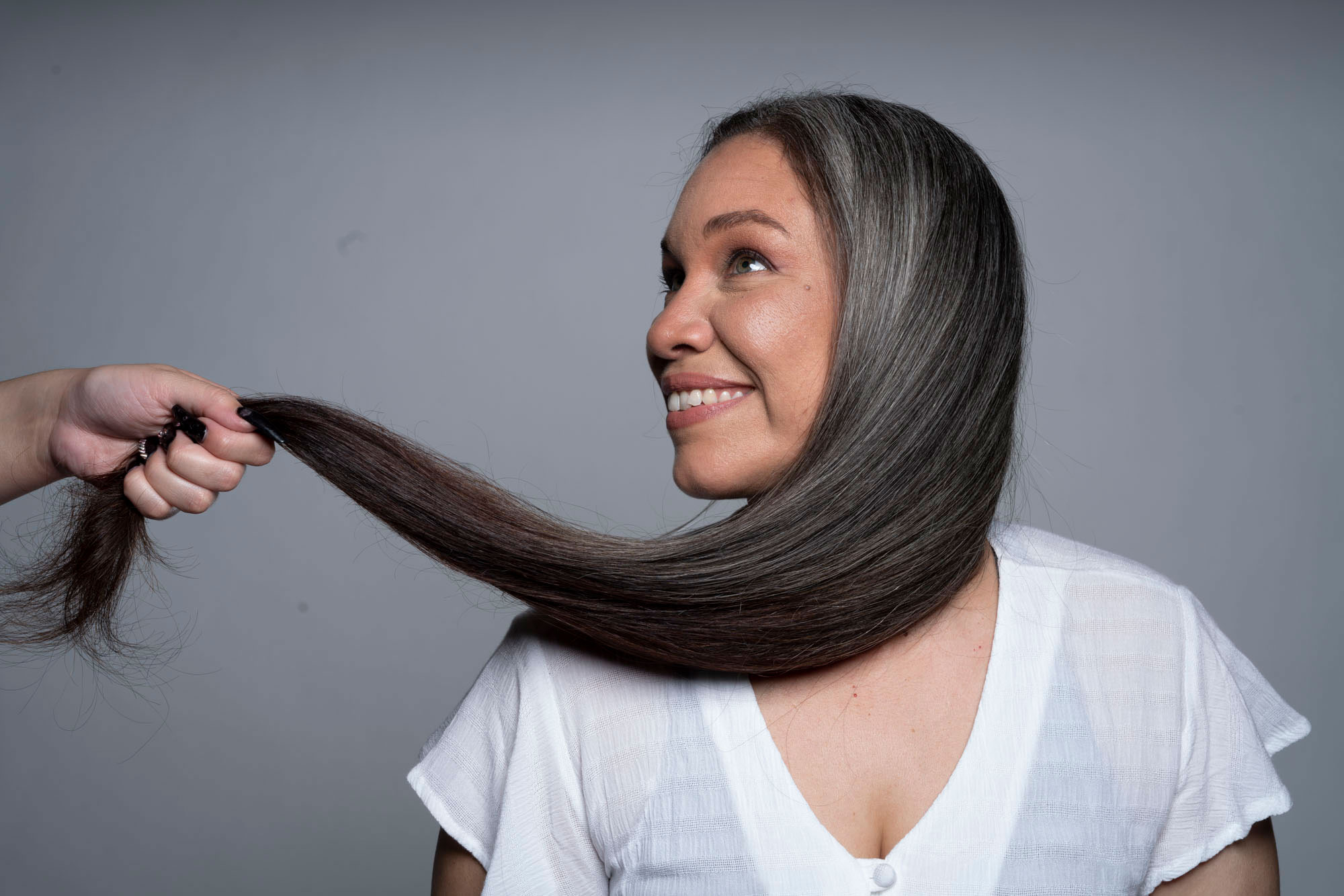Making the decision to stop using hair color and embrace your natural gray or white hair can be difficult to reach. Everyone has an opinion, and there are tons of pros and cons, but the truth is the only opinion that matters is yours. Growing out artificial hair color is challenging, time consuming, and frustrating at times. Is it foolproof? Not always. Have patience and avoid the following pitfalls to ensure you’re going gray the right way.
Find Inspiration
You may have lingering doubts about going gray. Whether it’s friends and family discouraging you or you have commitment issues, it’s important to give yourself the necessary time to make an informed decision. Find inspiration online. There are countless celebrities who have gone gray since the pandemic. Search hair sites and Pinterest. Bookmark your favorite styles and revisit them often until you have the confidence to take the leap.
No Cuts No Glory
Visiting your stylist for regular cuts is a must! Just because you have no intention of moving forward with color services doesn’t mean you should break up with your hairdresser altogether. Regular haircuts every six weeks are so important in maintaining hair health and will help speed up the going gray process by removing dead and split ends as well as artificial color.
Purple Reigns
Toning shampoos come in a variety of colors. There’s blue and green, but there’s a reason why purple reigns supreme. It’s not uncommon for gray and silver hair to develop brassy, yellow tones from heat styling, product buildup, chlorine, exposure to UV rays, and even some medications.
The standard color wheel places purple and yellow opposite from each other because they are complementary. When combined, they neutralize one another. The purple hue will add the brightness and brilliance you’re missing when used weekly.
Protective Measures
You probably aren’t thinking that your natural hair is more susceptible to heat damage from styling tools as your artificial hair color grows out, but it is actually a common problem. Heated plates and barrels degrade the hair protein, causing strands to turn yellow through oxidation. Other signs of heat damage include increased porosity, weakened elasticity, split ends, and frizz so it’s crucial to take steps to protect those precious strands by using thermal protectant prior to styling.


